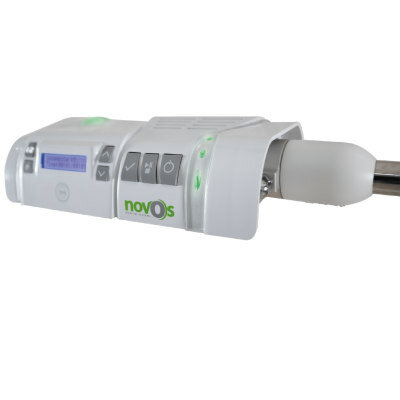Compressive Intramedullary Nail Promotes Bone Healing
By HospiMedica International staff writers
Posted on 23 Jan 2018
An internal fusion device harnesses the pseudoelastic properties of nickel-titanium (NiTiNOL) to provide the compression performance of an external frame inside an intramedullary nail design.Posted on 23 Jan 2018
The MedShape (Atlanta, GA, USA) DynaNail XL tibiotalocalcaneal (TTC) fusion system features an internal NiTiNOL compressive element that maintains post-operative compression in order to accommodate for up to six mm of bone resorption and settling. The compressive element also allows for effective load sharing across the bone due to axial compliance during weightbearing. Similar to the original 220 mm version, the DynaNail XL--which is available in 260mm and 300mm lengths--also has a proximal taper for easy insertion through the tibial isthmus and an extra proximal screw hole for an optional cortical screw for additional stability.

Image: The DynaNail XL internal compressive element automatically adapts to changes in the joint (Photo courtesy of MedShape).
The DynaNail XL, however, better accommodates longer patient tibial anatomies, or if tibial fractures are noted. According to the company, its longer length, in combination with the pseudoelastic internal NiTiNOL compressive element, could help reduce stress risers in the bone, consequently lowering the chance for tibial fractures. The proprietary DynaFrame Carbon-Fiber deployment system provides a simple, robust method to insert the DynaNail and activate the NiTiNOL element during surgery, which also facilitates automatic dynamization once the NiTiNOL element has fully recovered.
“The recent additions to the DynaNail portfolio demonstrate our continued commitment toward improving upon the success of the company’s flagship product,” said Kurt Jacobus, CEO of MedShape. “We have been pleased with the growing adoption of this unique technology by both orthopedic surgeons and podiatrists, and anticipate continued growth with these new offerings.”
An intramedullary nail is a metal rod forced into the medullary cavity of a bone, which forms a self-contained internal splint in order to stabilize the fracture. This is often done for fractures of the tibia, femur, and humerus. Advantages include more exact alignment of the fractured bones for faster healing and earlier weight-bearing, earlier joint motion for reduced stiffness, and a more natural-like motion in uninjured muscles and neighboring joints.
Related Links:
MedShape














